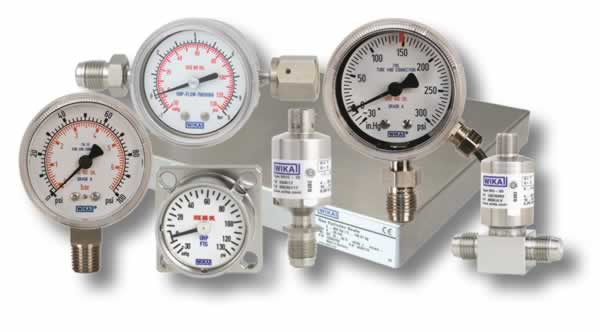High purity gauges and transducers are essential components in various industries and applications where precision and accuracy are paramount. These instruments are designed to measure pressure, force, temperature, and other physical parameters with an unparalleled level of accuracy, ensuring reliable and consistent data acquisition. The main benefits of high purity gauges and sensors are manifold and have far-reaching implications across a wide range of sectors.
- Precision and Accuracy: High purity gauges and transducers are manufactured with meticulous attention to detail, utilizing advanced technologies and materials that minimize deviations in measurements. This precision and accuracy are critical in industries such as aerospace, pharmaceuticals, and semiconductor manufacturing, where even the slightest variation can lead to significant errors or failures.
- Process Optimization: In industries where the quality and efficiency of production processes are paramount, high purity gauges and transducers play a pivotal role. By providing accurate and real-time measurements, these instruments enable process engineers to fine-tune manufacturing parameters, resulting in improved product quality, reduced waste, and increased yield.
- Safety and Reliability: Certain industries, such as oil and gas, chemical, and nuclear power, deal with hazardous materials and environments. High purity gauges and transducers are designed to withstand these challenging conditions while delivering accurate measurements. This enhances safety by enabling operators to monitor critical parameters without compromising their well-being.
- Quality Control: Maintaining consistent product quality is crucial in industries such as food and beverage, automotive, and electronics. High purity gauges and transducers ensure that stringent quality standards are met by allowing real-time monitoring and adjustments during the production process. This results in fewer defects, fewer recalls, and overall higher customer satisfaction.
- Research and Development: In scientific research, high purity gauges and transducers are indispensable tools. They provide researchers with accurate data, aiding in the understanding of various phenomena and enabling the development of new technologies and innovations. Whether studying material behavior under extreme conditions or conducting experiments in controlled environments, these instruments contribute to the advancement of knowledge.
- Environmental Monitoring: Gauges and transducers with high purity levels are used in environmental monitoring to assess factors such as air and water quality, weather patterns, and geological activity. Accurate measurements are vital for understanding the impact of human activities on the environment and making informed decisions to mitigate negative effects.
- Energy Efficiency: High purity gauges and transducers are employed in energy-intensive industries to optimize energy consumption. By providing precise measurements of pressure, temperature, and flow rates, these instruments aid in identifying areas where energy efficiency improvements can be made, leading to reduced operational costs and environmental impact.
- Medical Applications: In the field of medicine, high purity gauges and transducers are used in various diagnostic and therapeutic equipment. From monitoring blood pressure to regulating the delivery of medications, these instruments ensure patient safety and contribute to accurate medical interventions.
- Automated Systems: High purity gauges and transducers are crucial components in automated systems and control processes. These instruments provide the necessary feedback for automated machinery to operate accurately, resulting in consistent and reliable performance across industries such as manufacturing, robotics, and logistics.
In conclusion, high purity gauges and transducers offer a plethora of benefits across diverse industries. Their precision, accuracy, and reliability empower professionals to make informed decisions, optimize processes, ensure safety, and drive innovation. As technology continues to advance, these instruments will likely play an increasingly pivotal role in shaping various sectors and driving progress forward.
